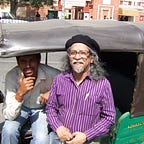Waterloo V Peterloo
The Brits and their allies the consisting mainly of Prussians, the Irish and the Dutch, under the leadership of the Duke of Wellington and Marshall Blücher, inflicted a resounding defeat on Napoleon. Even the loss of the battle of Trafalgar had not dampened his enthusiasm for attacking other nations in an attempt to subjugate them. When he “met his Waterloo”, it was in fact not at Waterloo, but the victor the Duke of Wellington had a base there and the name having a nice ring to it was universally adopted. The Brits fought valiantly and honourably and managed to put paid to the ambitions of the Corsican.
Mike Leigh’s film Peterloo was a fair picture of how the events in Manchester developed shortly after. This year is the two hundredth anniversary of that shameful event. Here, there was neither valour nor honour on display. The authorities sent armed troops to deal with peaceful demonstrators, among whom veterans of the Napoleonic wars, demanding perfectly legitimate redress. In those days_ early nineteenth century_ the country was governed by the rich and for the rich, and consequently against the poor. The people of Manchester thought that it was
unreasonable that they were not allowed a representative in parliament. Factory workers had very few rights and were paid starvation wages. They decided to hold a peaceful march to highlight their plight. Henry Hunt, a well-known campaigner who was himself from the landed gentry, a formidable orator, was due to address the crowd of between 60 and 80,000 men, women and children. The presence of women and children should have made it obvious to the authorities that the demonstrators had not planned any violent action. But the moment Hunt started his speech, the volunteers of the Manchester Yeoman Cavalry, consisting of gentlemen riders, aided by the local constabulary arrested the speaker and charged the unarmed crowd with sabres and truncheons, trampling people with their massive equines. The event had been the first mass movement of its type in which women wanted to play an active part. This must have roused the ire of the establishment, for among the dead and wounded there would be proportionally twice as many women casualties. At the end of the day 18 people had been killed and the wounded were in thousands.
But the workers of Peterloo had not met their Waterloo. Rather it was the government and the ruling class which earned themselves a bloody nose. The massacre of Peterloo spelled the beginning of a new era. Sadly but interestingly, to teach the people a lesson, the first few months after the event, there was much more repression, as the workers were deemed to have lost and therefore made powerless, but the press, often an organ which usually supported the rich, could not carry on as before. Stories of the atrocities of Peterloo and the hardships of the population began to appear with greater frequency. The population gradually became aware of the iniquities of conservatism.
Reform became inevitable.
